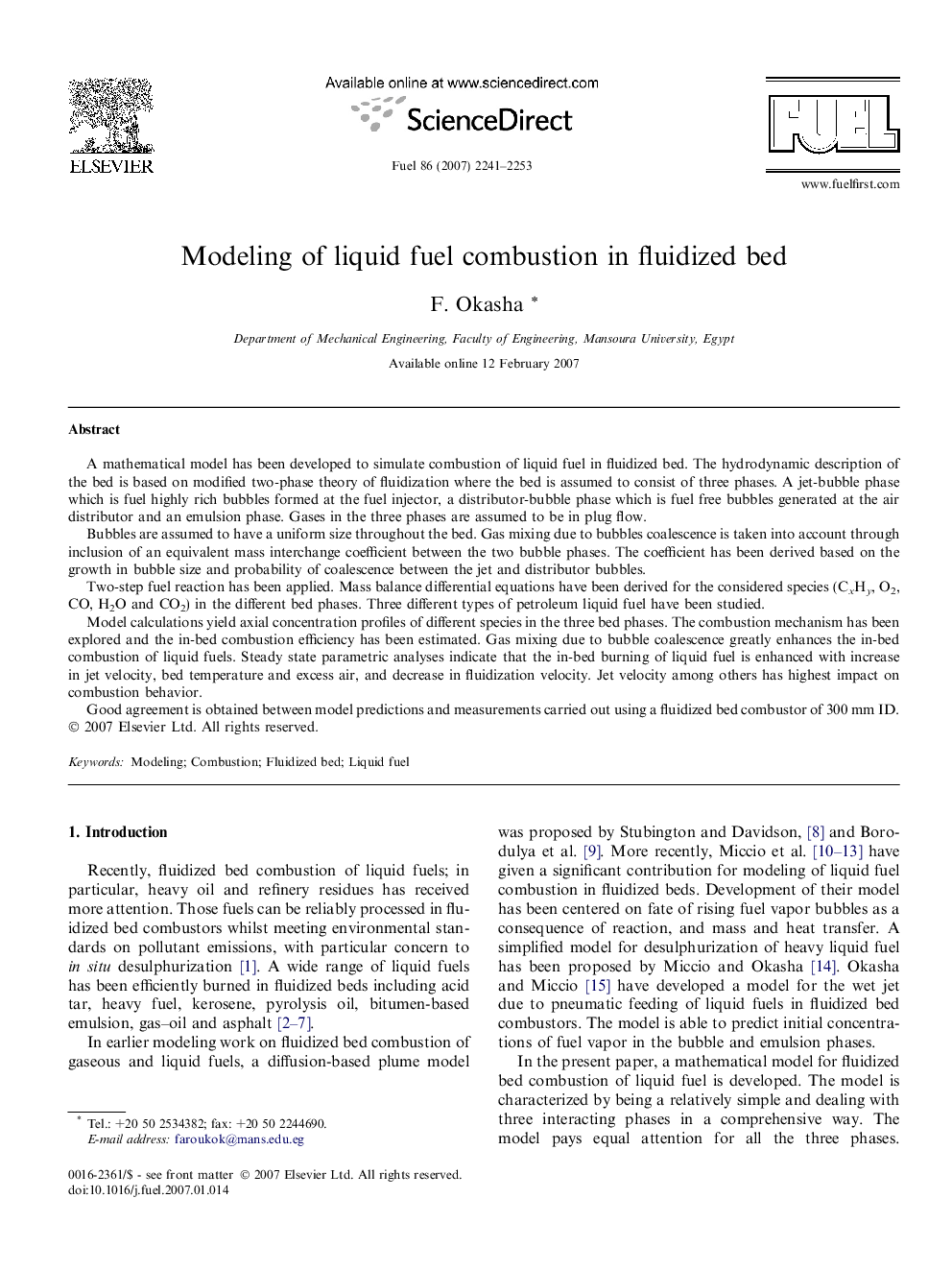| Article ID | Journal | Published Year | Pages | File Type |
|---|---|---|---|---|
| 208190 | Fuel | 2007 | 13 Pages |
A mathematical model has been developed to simulate combustion of liquid fuel in fluidized bed. The hydrodynamic description of the bed is based on modified two-phase theory of fluidization where the bed is assumed to consist of three phases. A jet-bubble phase which is fuel highly rich bubbles formed at the fuel injector, a distributor-bubble phase which is fuel free bubbles generated at the air distributor and an emulsion phase. Gases in the three phases are assumed to be in plug flow.Bubbles are assumed to have a uniform size throughout the bed. Gas mixing due to bubbles coalescence is taken into account through inclusion of an equivalent mass interchange coefficient between the two bubble phases. The coefficient has been derived based on the growth in bubble size and probability of coalescence between the jet and distributor bubbles.Two-step fuel reaction has been applied. Mass balance differential equations have been derived for the considered species (CxHy, O2, CO, H2O and CO2) in the different bed phases. Three different types of petroleum liquid fuel have been studied.Model calculations yield axial concentration profiles of different species in the three bed phases. The combustion mechanism has been explored and the in-bed combustion efficiency has been estimated. Gas mixing due to bubble coalescence greatly enhances the in-bed combustion of liquid fuels. Steady state parametric analyses indicate that the in-bed burning of liquid fuel is enhanced with increase in jet velocity, bed temperature and excess air, and decrease in fluidization velocity. Jet velocity among others has highest impact on combustion behavior.Good agreement is obtained between model predictions and measurements carried out using a fluidized bed combustor of 300 mm ID.
